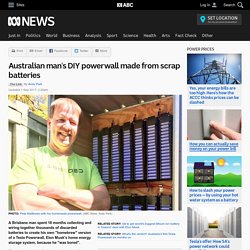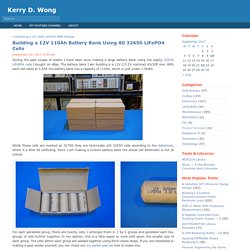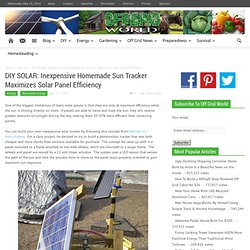

Australian man's DIY powerwall made from scrap batteries. Updated 1 Sep 2017, 2:20pmFri 1 Sep 2017, 2:20pm A Brisbane man spent 18 months collecting and wiring together thousands of discarded batteries to create his own "homebrew" version of a Tesla Powerwall, Elon Musk's home energy storage system, because he "was bored".

Key points: Pete Matthews DIY battery cut his power bill by $1,300His homemade system uses 4,480 18650-type lithium-ion batteriesHe says 'if you can hold a soldering iron and read a cookbook' you can build one "[I needed something] to get my ideas out of my skull and onto the bench, so to speak," Pete Matthews told The Link. The self-taught computer repairman now uses his backyard invention to power his family's off-grid household appliances, excluding his hot water, air conditioning and stove, which are still connected to the grid. He says his invention can store 40kwh, or 2.8 times the capacity of Tesla's newest 14kwh Powerwall 2. "You buy stuff off the old interwebs and you solder it up and it actually works," he said. 3 6. Multicharger - charging a LiFePO4. Building a 12V 110Ah Battery Bank Using 80 32650 LiFePO4 Cells. During the past couple of weeks I have been busy making a large battery bank using the eighty 32650 LiFePO4 cells I bought on eBay.

The battery bank I am building is a 12V (13.2V nominal) 4S/20P one. With each cell rated at 5.5Ah the battery bank has a capacity of 110Ah, which is just under 1.5kWh. While These cells are marked as 32700 they are technically still 32650 cells according to the datasheet, which is a little bit confusing. Since I am making a custom battery bank the actual cell dimension is not as critical. For each paralleled group, there are twenty cells. Ideally, each cell should be separated using plastic cell spacers. I used cardboard instead to group the batteries together since the batteries I used are LiFePO4 cells. I did not take into account the possibility of individual cell failures within each paralleled group however. Battery Management Module Hacked for Lithium-Iron Battery Bank.
In a departure from his usual repair and tear down fare, [Kerry Wong] has set out on a long-term project — building a whole-house battery bank.

From the first look at the project, this will be one to watch. To be fair, [Kerry] gave us a tease at this project a few months back with his DIY spot welder for battery tabs. Since then, he appears to have made a few crucial design decisions, not least of which is battery chemistry. A Battery-Tab Welder with Real Control Issues. Spot welding should easier than it looks.

After all, it’s just a lot of current in a short time through a small space. But it’s the control that can make the difference between consistently high-quality welds and poor performance, or maybe even a fire. Timnolan - Solar Grid-Intertie Inverter. Tractile. Generate cheap, green electricity from sunlight with solar roof tiles - Living Outdoor. Picture 1 of 6.

DIY SOLAR: Inexpensive Homemade Sun Tracker Maximizes Solar Panel Efficiency. One of the biggest limitations of static solar panels is that they are only at maximum efficiency while the sun is shining directly on them.

If panels are able to move and track the sun, they will receive greater amounts of sunlight during the day, making them 30-50% more efficient than unmoving panels. You can build your own inexpensive solar tracker by following this concept from bwitmer on Instructables. For a class project, he decided to try to build a photovoltaic tracker that was both cheaper and more sturdy than versions available for purchase. The concept he came up with is a panel mounted to a frame attached to two bike wheels, which are mounted to a larger frame.
The wheels and panel are moved by a 12 volt linear actuator. To build this tracker, you’ll need The first step of this project is to build the base and attach the wheels, then build a sturdy frame for attaching the panel. How to boost any solar panel output by 75% Plug & play folding solar system features dual axis tracking, claims 40% more output. This innovative solar energy system might give rooftop solar a run for its money with its nature-inspired design.
Even though solar power systems are most efficient when the panels are positioned directly perpendicular to the sun, most conventional rooftop solar arrays are installed at a fixed angle and orientation, which means that as the sun moves across the sky during the day, the panels are only square to the sun for part of the day. And while tracking systems are available for solar arrays, the added cost and complexity of integrating solar tracking with an array isn't quite practical or affordable enough to justify the expense for most solar installations. The Smartflower POP system is a 3.2 kW solar array which is designed to be ground-mounted, with the device folding its panels up at night or in high wind conditions, and then automatically unfolding again in the morning.
"The size of the system alone is no longer the measure of all things.